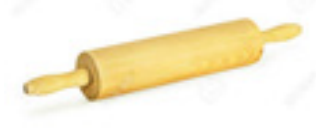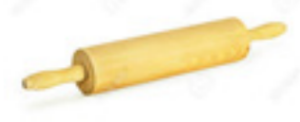39 Measuring Conversions
Culinary math begins with the basics of addition, subtraction, multiplication, and division along with ratios, yields, and percentages. Ingredients must be measured and scaled accurately, food production quantities are calculated, and recipes are increased or decreased to scale based on demand.
Temperature
Sometimes, a recipe might provide cooking temperatures in Celsius, but the dial on your range displays Fahrenheit, and vice versa. If you know the formula to convert Celsius to Fahrenheit you can easily figure out what to set your dial to.
The formula is °F = ((9 ÷ 5) × °C) + 32. For example, if the Celsius temperature is 200, you convert it to Fahrenheit by working out ((9 ÷ 5) × 200) + 32, i.e. 360 + 32, which is 392 degrees Fahrenheit. To convert a temperature of 392 degrees Fahrenheit to Celsius, the calculation is (392 − 32) ÷ (9 ÷ 5).

Quantities
If you want to make more than one batch, you need bigger quantities of every ingredient. Multiply each ingredient by the number of batches. For example, if a recipe provides an ingredient list for six cookies but you want to make 12 cookies, you need to multiply all ingredients by two to make your larger batch. That may involve multiplying fractions, for example if the recipe calls for
A knowledge of fractions is also useful if you want to make a smaller batch than the recipe. For example, if the recipe provides an ingredient list for 24 cookies, but you only want to make six cookies. In this case, you need to quarter each ingredient. So if the recipe requires two teaspoons of baking powder, you only need

Cooking Time and Weight
You often have to work out how long to cook something based on its weight, such as a turkey for Thanksgiving dinner. First, you may need to thaw that turkey. If a turkey has to thaw in the refrigerator for 24 hours per 5 pounds, how long do you need to thaw a 10-pound turkey? To work this out, you take the weight of the turkey and multiply it by the time value you already have, i.e. 10 × 24. Next, you divide this figure (240) by 5 pounds. The answer (48) is the number of hours you have to thaw a 10-pound turkey. To work out how long you have to cook something, the formula is cooking time in minutes = 15 + ((mass in grams ÷ 500) × 25). For example, if you have a chicken that weighs 2.8 kg, the calculation is 15 + ((2800 ÷ 500) × 25). The answer is 155 minutes, meaning you have to cook the chicken for 2 hours and 35 minutes.

Converting Cups to Pounds
Converting measurements is often necessary when you are involved in cooking. Measuring ingredients can require that liquids be converted from one unit of measure to another. A liquid such as water, for example, may need to be converted to ounces or pounds before being mixed. This can at first seem a daunting task, however, when the problem is approached from a point where basic equivalents are considered, then the problem may be more easily worked and the conversion made.
Begin converting cups to pounds by understanding a few basic conversion points. 16 ounces equals one pound or two cups. Another way to look at the equivalent is that one cup weighs eight ounces and therefore two cups equal 16 ounces and this is the same weight of one pound–16 ounces.
Convert a cup measurement to pounds by applying the formula in step one to the problem. For example, if you are converting five cups to pounds you will first multiply five (the number of cups) by eight (the number of ounces in one cup). The answer here is 40.
Divide the number 40 by 16 or the number of ounces in one pound. So, in the example, 40 divided by 16 equals two and one half. The answer is five cups weighs 2.5 pounds. Another way to look at the problem is that for every one pound you must have two cups.

Converting Grams to Ounces and Pounds
You can convert grams to ounces and/or pounds just by using some simple multiplication and division. You’ll use the conversion that tell you there are 0.035 oz. in a gram and 16 oz. in a pound. If you want to do calculations that tell you how to convert grams to pounds, skipping over ounces, you’ll use the conversion that tells you there are 0.00220462262 lb. in a gram. Although a calculator will expedite how quickly and how correctly you can convert your grams to ounces and/or pounds, you can also do so with a pencil and paper.
Multiply your number of grams by 0.0352739619. The answer will tell you how many ounces you have. For example, 1,000 g times 0.0352739619 oz. equals 35.2739619 oz.
Divide your ounces from step 1 by 16. The answer will tell you how many pounds you have. Your remainder will tell you how many ounces are left over if there aren’t enough to make a full pound. For example, 35.2739619 oz. divided by 16 equals 2 with a remainder of 3.2, so you have 2 lbs., 3 oz.
Multiply your number of grams by 0.0625 pounds if you want to convert grams directly to pounds without considering or having to do calculations for ounces. For example, 1,000 g times 0.00220462262 lb. equals 2.20462262 lbs.

Ratio Review for Recipes
Example: A Recipe for pancakes uses 3 cups of flour and 2 cups of milk.
So the ratio of flour to milk is
To make pancakes for a LOT of people we might need 4 times the quantity, so we multiply the numbers by 4:
In other words, 12 cups of flour and 8 cups of milk.
The ratio is still the same, so the pancakes should be just as yummy.
| Unit | Multiplier |
|---|---|
| kilogram (kg) | 1000 |
| gram (base unit) (g) | 1 |
| milligram (mg) | 0.001 |
| Unit | Multiplier |
|---|---|
| ounce (oz) | |
| pound (lb) | 16 ounces |
| ton | 2000 pounds |

